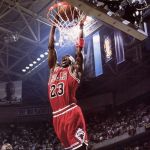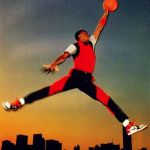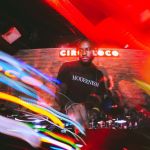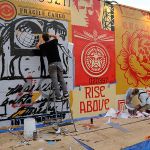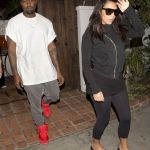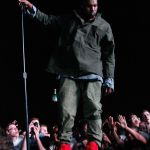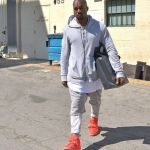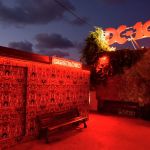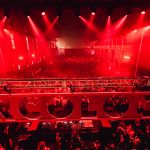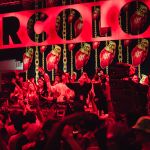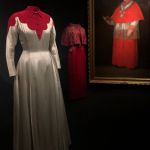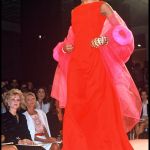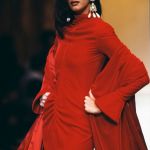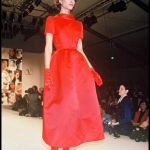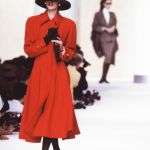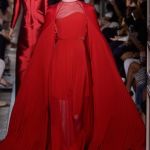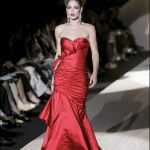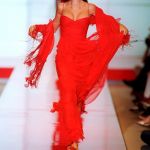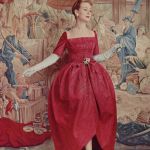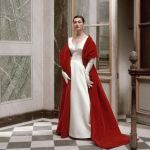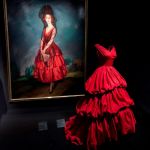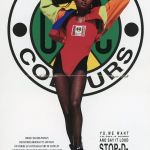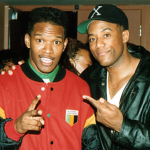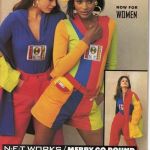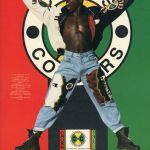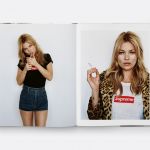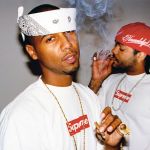
A history of red: from couture to streetwear
How the most opulent color of luxury became the symbol of hype
March 29th, 2021
There is a term dear to psychology and ethology called red-dress effect. The term refers to the set of neuro-biological phenomena that result, among animals, from the sight of the red color: there are animals that have evolved to make their skin or their plumage red in the mating season, some flowers are red to attract the largest number of bees and birds - and even among humans red is the color of passion and danger , as well as the first color that our brain and eyes are programmed to spot. Clearly the psychological strength of this color became evident at all stages of human history: both roman patricians and nobles of the ancient Chinese Empire dressed in red or used it in the décor of their home; further on red became the color of devils, passion and even revolutions. And already the name of red-dress effect creates natural parallels with fashion: from the cardinal red of Balenciaga to that of Valentino up to the first Nike Air Ship of Michael Jordan and Supreme, but also passing through the notions of classic marketing - for which red represents youth and dynamism, and has become the symbol of Coca Cola, Marlboro but also Nintendo, Canon and LEGO, as well as Netflix.
Red in high fashion
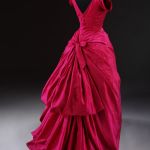
At the beginning of fashion as we know it (and for many years to come) red was a symbol of luxury and opulence, in a very traditional conception that saw in color the connotations of royalty but also of passion. A history of the red of the modern fashion world should therefore start, ideally, from the legendary Cristobàl Balenciaga who was inspired by the cardinals painted by Velazquez and Goya for some of his most famous designs - design that in 2019 became the protagonists of an exhibition in Madrid that alongside the paintings that inspired them. Even today, among other things, many of the red items produced by the brand are in Cardinal Red: already from the name evoke an aristocratic sense of opulence and importance. However, it was not only the ancient paintings: Balenciaga was also inspired by flamenco dancers and their bata de cola skirt and the bullfighters' bolero - all designs created after 1949, that is, in full Francoism, which evoked the nostalgia of the ancient Spanish tradition.
Very similar to Balenciaga for the use of red in the couture world is Valentino Garavani, who founded his brand in 1957, that is, about a decade before Balenciaga retired from the stage. If Balenciaga had recovered the use of red from the clothes of the cardinals, bullies and dancers of his native Spain, Valentino also had the idea of making red his stylistic signature in that country: according to a well-known anecdote, the young man would have been inspired by the dress of a woman seen at the Barcelona opera. Detaching itself from Balenciaga's pictorial-religious heritage, Valentino red really became "imperial", a symbol of the highest luxury and nonconformism.
Red in streetwear
But red is not only synonymous with luxury: among its many meanings there is also action, dynamism, vitality. With these meanings red first became one of the favorite colors of marketing, marking a huge series of iconic products such as Coca-Cola, Marlboro, Nintendo and, recently, also Netflix, and finally one of the colors of streetwear and youth cultures: in the late 1950s James Dean wore an iconic red harrington jacket in Rebel Without a Cause and at the end of the 1960s red was the color of youth protest. But if red is so popular today, we owe it to Michael Jordan who, in the game against the Knicks on October 19, 1984, wore a pair of Nike Air Ships in the Black/Red colorway coordinated, of course, with the red uniform of the Chicago Bulls eliciting the ban of NBA Commissioner David Stern - an episode that gave the colorway the name "Banned". Jordan was fined $5,000 for each game he wore them in, and Nike paid every fine. Nike chose to have Jordan wear the Air Ships until April '85 in the White/Red colorway because of the uniformity of uniform rule and used the "Banned" issue to build perhaps the most eye-catching advertising campaign ever. The Air Ships were extremely similar to the future Air Jordan 1 - it was from their silhouette that designer Peter Moore made the first Air Jordans.
While the long mythology of Michael Jordan and Air Jordan was triumphantly linked to the red color - there was another brand that, starting in 1989, made red one of the favorite colors of the streetwear world: Cross Colours LA. Founded in California by Carl Jones, the brand was born riding the hip-hop craze of those years and was the first that directly addressed the younger African-American generations (as well as being one of the most important black-owned brands of those years). The colors of Cross Colours LA wanted to emphasize the African heritage and for this reason used red in its color palette along with green, yellow and black. The brand immediately became famous, thanks to its dynamic campaigns (one of the most iconic features a very young Djimon Hounsou) and the endorsement of the first wave of hip-hop artists: Snoop Dogg, Diddy and Queen Latifah on all.
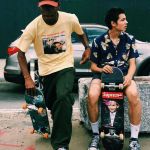
On the other side of America, meanwhile, a young Ango-American named James Jebbia cultivated the passion of skateboarding, working in stores such as Parachute and Union NYC and collaborating with Shawn Stussy. In 1994 Jebbia opened Supreme's first legendary store on Lafayette Street: red was the color of its logo. The choice of this color was not accidental and brings back into play the role of red as the color of protest and revolutions. For Supreme's logo, in fact, Jebbia was inspired by the works of the artist Barbara Kruger who used the white font Futura Bold Oblique printed in red tiles to imitate the graphics both the feminist slogans of the late 1960s and the advertisements of that era, dominated by red graphics to attract the attention of consumers. In 1994, however, artist Shepard Fairey signed the definitive version of his viral sticker that reproduced the features of Andre The Giant surrounded by a red frame – that sticker later became the basis of Obey's logo.
From Supreme to Ibiza
From that point on, the red of Supreme's box logo, along with the red of the Air Jordan 1, became synonymous with American street culture that then spread to the whole world, replacing the aristocratic myth of Valentino's red with his own, more democratic. Shepar Fairey himself harnessed the power of red in a number of other iconic works: Mozilla's logo in 1998 and Obama's Hope poster in 2008 and Nelson Mandela's mural in 2014. But red continued its rise first with the legendary Nike Air Yeezy 2 Red October, unveiled in February 2014, and then becoming the flagship color of the iconic Louis Vuitton x Supreme collection in 2017.
The last incarnation of red, symbolic bridge between music, fashion, lifestyle and jet-set, is the Circoloco, the series of events that animates the day and nights of Ibiza and founded the myth of nightlife on the island starting in 1999 and used red in its logo. These events, which then became itinerant all over the world, launched a huge number of DJs and musical artists such as Ricardo Villalobos, Peggy Gou Seth Troxler Luciano Rampa &Me, Loco Dice and Ellen Allien involving creatives such as Maurizio Cattelan, the Toilet Paper studio and designers such as Riccardo Tisci and Virgil Abloh (who also opened the Milan event when the event arrived in the city). Circoloco, its founder Antonio Carbonaro and Andrea Pelino created today's clubbing concept at that time and launched a brand that was the first to be able to mix lifestyle, creativity and fashion in a completely pioneering way thanks to No Soul For Sale, a clothing and accessories line that made the color of circoloco's red the first and most important element of recognition.



















































